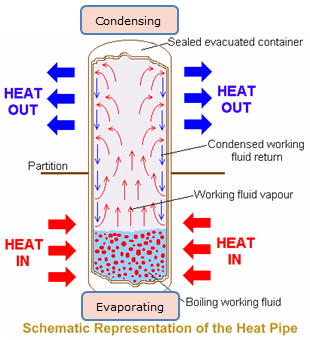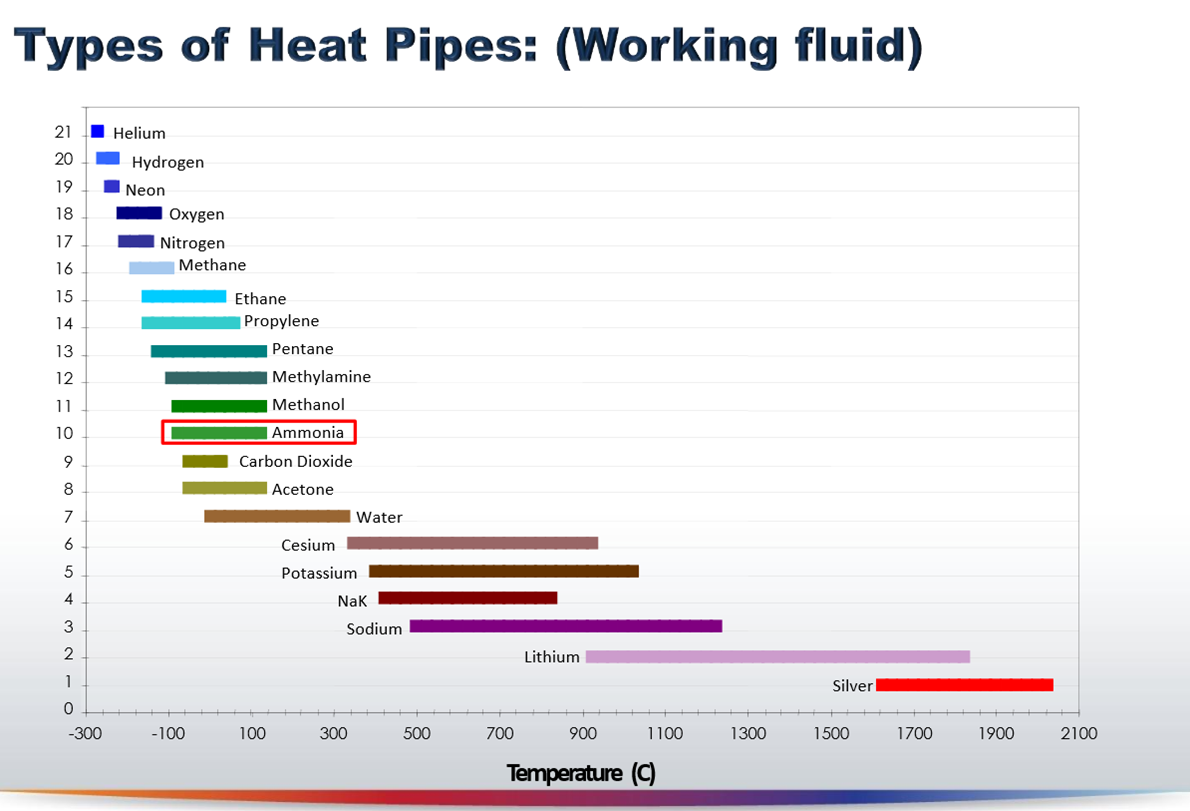Heat pipes are thermetically sealed evacuated tubes normally containing a working fluid in both liquid and vapor phase.
When the evaporating end of the heat pipe is heated, the internal liquid or working fluid turns to vapor absorbing the latent heat of vaporization. The hot vapor flows upward to the colder end of the tube where it condenses and gives up the latent heat. The condensed liquid then flows back down to the hot end of the tube where it will begin the cycle again. Since the latent heat of evaporation is typically very large, considerable quantities of heat can be transported with a very small temperature differential from one end of the heat pipe (evaporating end) to the other (condensing end). See Figure. 1
Figure 1

Figure 2

The amount of heat that can be transported as latent heat of vaporization is usually larger than can be transported by a conventional convective system with an equivalent temperature differential. This cycling process happens extremely fast allowing the Heat Pipes the ability to be 99% efficient in the transfer of available thermal energy again making them more efficient than other competing heat recovery technologies.
Each heat pipe can be filled with a variety of working fluids to maximize the heat transfer potential according to the particular application. The selection of the correct pipe material and the proper working fluid allows the heat pipe to transfer up to 1000 times more thermal energy than a normal copper pipe of the same dimensional mass typically found in a standard heat exchanger design.
See Figure 2
As part of an evaluation process, companies should take critical measurements, e.g. Air Profiles, within the production process to identify the amount of energy that can be captured from the heat in the waste energy stream. The available heat, coupled with its mass flow capacity determines the amount of energy that can be captured and returned to the facility for re-use by the same or a completely different process which could be on or offsite; e.g. district heating or power generation.
